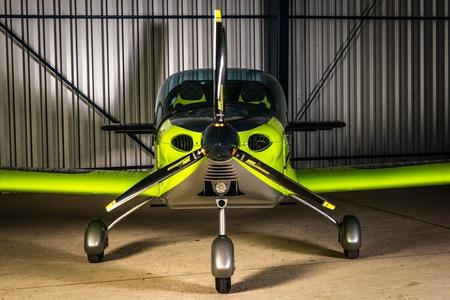In eastern Slovakia, engineers are working on what could become one of Europe’s most innovative green transport solutions – a hydrogen-powered aircraft capable of vertical take-off and landing (VTOL).
Supported by the European Union as one of its flagship clean mobility projects, the H2 VTOL is being developed by Tomark Proton, a Slovak company specialising in advanced aerospace technologies. The six-year programme, announced on Tuesday in Bratislava, is expected to cost €64.8 million in total, according to TASR.
“We began development last year,” said Martin Sedlák, co-owner and managing director of Tomark Proton. “H2 VTOL has the potential not only to replace helicopters with a cleaner alternative, but also to transform urban transport and logistics. That’s already attracting interest from a number of investors.”

The initiative goes far beyond the aircraft itself. The project also includes the development and certification of lightweight, recyclable hydrogen tanks and valves designed for use in aviation and other modes of transport.
A broader hydrogen mobility ecosystem is being planned alongside the aircraft – encompassing green hydrogen production, storage, fuelling infrastructure and future applications such as autonomous drones.
Despite its local beginnings, the Slovak prototype has already drawn attention across Europe and the Middle East. Tomark Proton is currently collaborating with major international companies including BMW, Neuman & Esser, HDF Energy, EVO, and Skeleton Technologies.

Hydrogen takes off
“This represents a significant technological leap,” said Professor Juraj Sinay, who teaches at technical universities in Košice and Ostrava, and advises Slovakia’s Economy Ministry on hydrogen technologies. “In my opinion, this could trigger a revolution in hydrogen aviation. There is a clear global trend towards new low-emission transport technologies.”
Beyond its technological aims, the project is expected to have a notable social and economic impact. According to Sinay, it will create around 16 high-level research posts and as many as 5,000 indirect jobs. A total of nine universities are set to be involved, with plans to generate around 20 patents. The initiative is also seen as a way to strengthen Slovakia’s energy security and cut national carbon emissions.
As Europe accelerates its search for sustainable transport solutions, a hydrogen aircraft emerging from Slovakia may soon be doing more than lifting off – it could be helping to reshape the future of mobility itself.


 In eastern Slovakia, engineers are developing a hydrogen-powered VTOL aircraft—one of Europe’s most innovative green transport projects. (source: Tomark Proton)
In eastern Slovakia, engineers are developing a hydrogen-powered VTOL aircraft—one of Europe’s most innovative green transport projects. (source: Tomark Proton)


